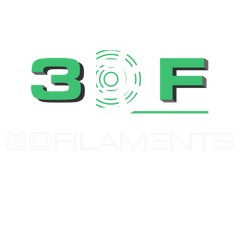3D printing can require different 3D filament types. 3D filament is the material used alongside fused deposition modeling 3D printers. There are many different kinds of filaments and they each have their own properties.
Not every filament is right for every job.
To help you get started on your 3D printing journey, we created this 3D printer filament guide to help you make the best choice for your next project.
PLA
PLA, or polylactic acid, is the most common of the 3D filament types. It's also the easiest to print with, has a lower printing temperature, and doesn't come with a strong odor when printing. It also doesn't warp easily and it's considered environmentally friendly because it uses renewable resources and is biodegradable.
PLA is great because it comes in a ton of colors and styles.
It can be a little brittle, so don't use it on projects that need to be sturdy. Anything higher than 140ºF will cause it to deform.
PLA is a great base for prototypes and containers.
ABS
ABS, or acrylonitrile butadiene styrene, is also a popular filament for 3D printing. ABS is great for projects that need to be sturdy and handle higher temperatures.
It has a higher printing temperature and can warp a little during the cooling process. Plus, it can be dangerous to print with if you're not in a ventilated area. You'll need a heated bed as well.
ABS is great for phone cases, tool handles, and toys that will see lots of action.
PET
You can also use PET, or polyethylene terephthalate. Raw PET isn't used in 3D printing, but PETG, or the glycol-modified version, is.
PETG is a great middle-ground between PLA and ABS. It is more flexible and can withstand more wear and tear than PLA but it's much easier to print with than ABS.
It's strong, flexible, and resists heat and wear.
Nylon
Nylon is another super durable, strong, and flexible filament for 3D printers. It also has the added benefit of being able to be dyed before or after you print with it.
Nylon 3D printer filament is best used for tools and mechanical parts.
TPE
Thermoplastic elastomers, or TPE, are plastics that can act like rubber. They're very flexible and very durable. TPE is used a lot to make medical supplies and household appliances.
TPE can be difficult to print with. However, a type of TPE called TPU is more rigid and easier to print with. It can also retain its elasticity in colder temperatures.
PC
Lastly, polycarbonate is the strongest 3D printer filament. It's extremely durable and can withstand heat and lots of wear and tear. It's also transparent, so it can be used to make things like electronic display screens and bulletproof glass.
It isn't as flexible as some of the other popular 3D filament types and it can deform. But it's great for mechanical, electrical, and automotive parts.
Which of These 3D Filament Types is Right for You?
Now that you know about the most common 3D filament types, you have to figure out what's best for your project. If you're making a simple prototype and you don't need your project to withstand a ton of wear and tear, PLA should do the job! But if you want to make something more sturdy, you'll want to use one of the others on the list.
If you're in the market for different 3D filament types, browse our selection today!

